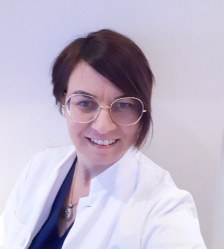Circulating tumour DNA reveals individual characteristics of cancer
A total of 40,000 women die of ovarian cancer in Europe every year, and there are approximately 550 new cases among Finnish women annually. Generally, the disease presents no symptoms in the early stages and is often not diagnosed until the cancer foci have spread to different parts of the abdominal cavity. Even then, the symptoms are often vague. A typical symptom, however, is abdominal swelling caused by ascites, which is a build-up of fluid in the abdominal cavity. Despite the development of medicines in recent years, the prognosis of the disease is poor, as only 43 per cent of patients are alive five years beyond diagnosis.Published 4.3.2021
Writer: Johanna Hynninen
The treatment of ovarian cancer consists of surgery and chemotherapy. In my work as an oncologist, I see how patients usually benefit from the treatments: symptoms abate and the patient’s condition improves as the treatment progresses. After first-line treatment, patients are often able to continue their normal everyday life. Although all tumours have, based on precise imaging results, disappeared, the disease unfortunately often recurs in time. The drug-resistant cancer cells that are hiding in the body multiply and cancer foci start growing again. This is a tricky problem for the doctor and the patient, since there are very few effective treatments available to manage the disease as it progresses.
Towards individual cancer treatment
In recent years, cancer research has focused on individual cancer treatment that utilises genetic analyses of the tumour to find targeted therapies that would suit each patient and each tumour type. For this, accurate tumour biopsies are required. A large tumour may sometimes be comprised of different areas, and metastases may contain cell populations that are different from the original tumour. As the treatment progresses, drug-resistant cells take over and the tissue specimen taken before the treatment no longer reveals the actual situation of the tumour if a case should relapse. We aim to solve this problem by using a liquid biopsy taken from a blood sample. Circulating tumour DNA (ctDNA) that is released from the cancer cells into the bloodstream can be measured from a blood sample. This provides us with up-to-date information on the cancer cells lurking in the body.
Ovarian cancer research at Turku University Hospital
For five years already, the Department of Obstetrics and Gynaecology of Turku University Hospital has been collecting tumour samples from cancer surgeries to be used for accurate genome analyses, as well as blood samples for ctDNA determination. These samples are collected both during chemotherapy treatments and in connection with disease recurrence. Sometimes when the disease recurs, the patient’s abdomen is filled with ascitic fluid, which needs to be aspirated to alleviate the patient’s condition. In these cases, the fluid is collected and the cancer cells that are floating in it are also analysed. By comparing the different samples, we aim to find the means with which to best address the causes of drug resistance. The use of ctDNA analytics helps us, without the need to take invasive tissue biopsies, to acquire up-to-date information about tumour mutations and to find drug targets as the disease recurs.
Possibility to incorporate ctDNA as part of future treatment plans
ctDNA has caused great excitement among cancer researchers in the last few years, and commercial ctDNA tests are already on the market. In the case of lung cancer, for example, ctDNA is already being used to guide the patient's clinical treatment, but the usefulness of the method has not yet been established for ovarian cancer. Before using the expensive tests in the treatment of patients, doctors and researchers want to ensure that the blood sample provides a highly reliable representation of the patient’s tumour. Among other aspects, we want to investigate if the targeted treatment of a recurring disease can be planned on the basis of tissue samples taken during surgery or would a more recent ctDNA blood sample be a better option. Which specimen will give us more information: a liquid biopsy from the abdominal cavity or ctDNA measured from the blood? It would also be useful if we could identify, at an early stage, those patients whose disease will recur rapidly and carry out further examinations with them. With the use of ctDNA in our pilot study, we detected a drug target in one patient that would otherwise not have been found. I hope that, in the future, we will achieve further concrete results that will promote patient treatment. I wish to thank the Sakari Alhopuro Foundation for supporting our research project.

Johanna Hynninen works as a Specialist in Gynaecological Oncology at the Department of Obstetrics and Gynaecology of Turku University Hospital. In 2015, she defended her doctoral thesis on PET imaging of ovarian cancer. In addition to her clinical work, she and her research group are extensively studying drug resistance as it concerns ovarian cancer. The research group at Turku University Hospital is part of the international DECIDER consortium.
Illustration: Merituuli Saario
Links:
https://sites.utu.fi/ovariancancer
https://www.deciderproject.eu/
https://www.utu.fi/en/people/johanna-hynninen
